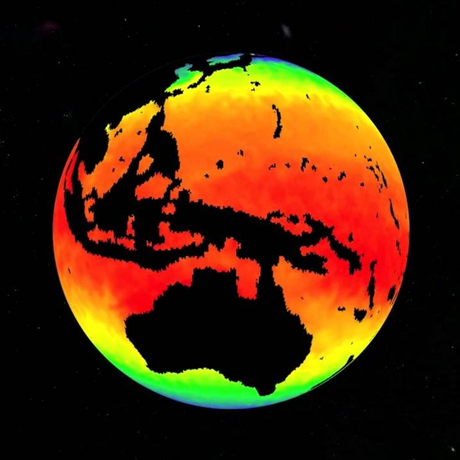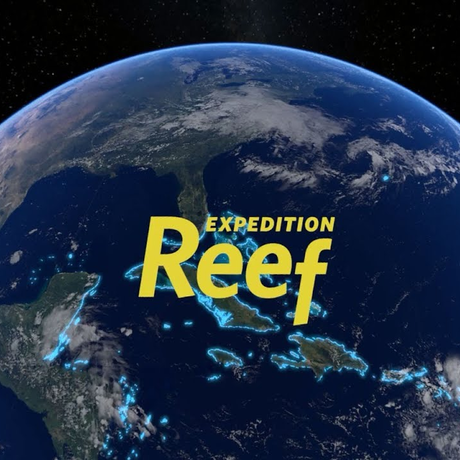Our collection of educational videos will help your students visualize data and understand scientific concepts.

Discover Chile’s grand observatories and meet the people who push the limits of technology and what we know about the universe using world-class telescopes.
About This Film
Length: 30 min
Appropriate for: Grades 6-12
Languages: English language and Spanish language versions available
It takes a team of people with diverse backgrounds, talents and skills, working under unique sky conditions, to make a world-class observatory succeed. Big Astronomy will introduce you to cutting-edge telescopes in the remote mountains of Chile and to the people who make sure these instruments operate day and night, unlocking the secrets of the universe.
Big Astronomy: People, Places, Discoveries explores three observatories located in Chile, at extreme and remote places. It gives examples of the multitude of STEM careers needed to keep the great observatories working. The show is narrated by Barbara Rojas-Ayala, a Chilean astronomer.
Supplemental Resources
Big Astronomy offers a collection of informal activities and demonstrations supporting the film. Download the educator guide in English or Spanish to find additional content, including vocabulary lists, classroom activities, and short descriptions of each featured astronomer.
NGSS Connections for Middle School
MS-ESS1-2. Develop and use a model to describe the role of gravity in the motions within galaxies and the solar system.
MS-ESS2-5. Collect data to provide evidence for how the motions and complex interactions of air masses result in changes in weather conditions.
MS-ESS1-3. Analyze and interpret data to determine scale properties of objects in the solar system.
MS-PS4-2. Develop and use a model to describe that waves are reflected, absorbed, or transmitted through various materials.
Crosscutting Concepts: Systems and System Models, Structure and Function
Background Information for Educators
If you don't have time to show the entire film to your students, consider showing some of the shorter video clips which relate to the following questions.
Astronomy is a natural science that studies the universe, celestial objects, and, broadly, everything that originates outside the Earth’s atmosphere.
All sorts of people from all over the world, with different education levels and backgrounds, work in the field of astronomy. The most well-known profession in astronomy is an astronomer, who is a person who studies the universe. Astronomers need to use big observatories to take data. These observatories are supported by a large staff, with all sorts of areas of expertise. Some types of jobs that support astronomy include: engineers, mechanics, machinists, computer scientists, technicians, public relations managers, publicists, administrators, cooks, cleaning staff, educators, builders, health and safety personnel, and many more. Furthermore, indigenous peoples from all over the world have used astronomy in their daily lives for thousands of years, and continue to do so today.
Watch a clip from the Big Astronomy show related to how teamwork is vital to astronomy and science.
Indigenous peoples from all over the world pay close attention to the night sky. The motions of the Moon, planets, and stars serve as a navigational aid, a calendar, and a reminder of stories that have been important in their culture for thousands of years. The native Andean peoples looked at the night sky and saw constellations in the dark lanes of the Milky Way. Today, ALMA, which is built on land owned by the people native to the Atacama Desert, is used to study objects within those same dark lanes of the Milky Way. Astronomers learn from the astronomy practices and cosmovision of native peoples.
Watch a clip from the Big Astronomy show to discover how indigenous knowledge informs science and astronomy.
Most big astronomy is done by taking observations with large telescopes. Some of these telescopes are in space, like the Hubble Space Telescope. Many telescopes are on Earth. Telescopes need to be built in areas with a likelihood of having clear skies. Chile is one of the best places in the world for optical astronomy. About 70% of the world’s astronomy infrastructure is located on Chile’s mountains. Many big observatories are built in remote locations away from light pollution, and at high elevations, to escape some of the interference of the Earth’s atmosphere. Quite a few of these observatories are located on indigenous peoples’ lands, including ALMA in Chile, and Kitt Peak and Mauna Kea in the United States.
Watch a clip from the Big Astronomy show related to how Chile’s climate is uniquely suited for astronomy.
Planets form out of the leftovers of star formation. Stars form when gravity causes a large cloud of gas and dust to collapse. Most of the collapsing mass collects in the center, forming the central star. The rest of the matter is flattened into a protoplanetary disk, out of which the planets, moons, asteroids, and other small bodies form.
Watch a clip from the Big Astronomy show related to planetary formation.
Our universe contains objects that produce a vast range of radiation with wavelengths either too short or too long for our eyes to see. If we only studied the universe using the type of light we can see with our eyes (visible wavelengths) we would be very limited in what we could study. Some astronomical objects emit mostly infrared radiation, others mostly visible light, and still others mostly ultraviolet radiation. By building telescopes that can observe different parts of the electromagnetic spectrum, we can observe a more complete picture of an object.
Watch a clip from the Big Astronomy show related to observing in multiple wavelengths.
Optical telescopes observe visible light, the type of light you can see. Light from the object astronomers are observing collects on a large mirror at the base of a telescope, called the primary mirror. The larger the mirror, the more light it can collect, so astronomers like to build the largest telescopes possible. The primary mirror is curved so that the light bounces off it and focuses on a secondary mirror. The light then bounces off the secondary mirror through a small hole in the primary mirror, to a suite of instruments. The instruments analyze the light in different ways, and the data is collected by the telescope operators.
Radio telescopes work in much the same way optical telescopes do. However, they observe a type of electromagnetic energy that humans cannot see, radio waves. Stars, planets, galaxies, black hole accretion disks, pulsars, supernova remnants, and other celestial objects all emit radio waves. Radio telescopes observe these radio sources by collecting the radio waves on a primary mirror. The radio waves bounce off the primary mirror and focuses on a secondary mirror, which then directs the waves to the instruments that collect the radio signal. Most large radio telescopes, such as ALMA, work as an array—many antennas all working together as one big telescope. The radio signals collected by an individual antenna are correlated into one signal by a supercomputer. The signals can be interpreted as a spectrum graph, or an image. Radio telescopes allow astronomers to see very distant and very faint objects. They can also see objects whose visible light is obscured by dust. Radio telescopes can operate during both night and day and often make observations during the day when the sky is too bright for most optical astronomy.
Watch a clip from the Big Astronomy show that shows how different telescopes work.



